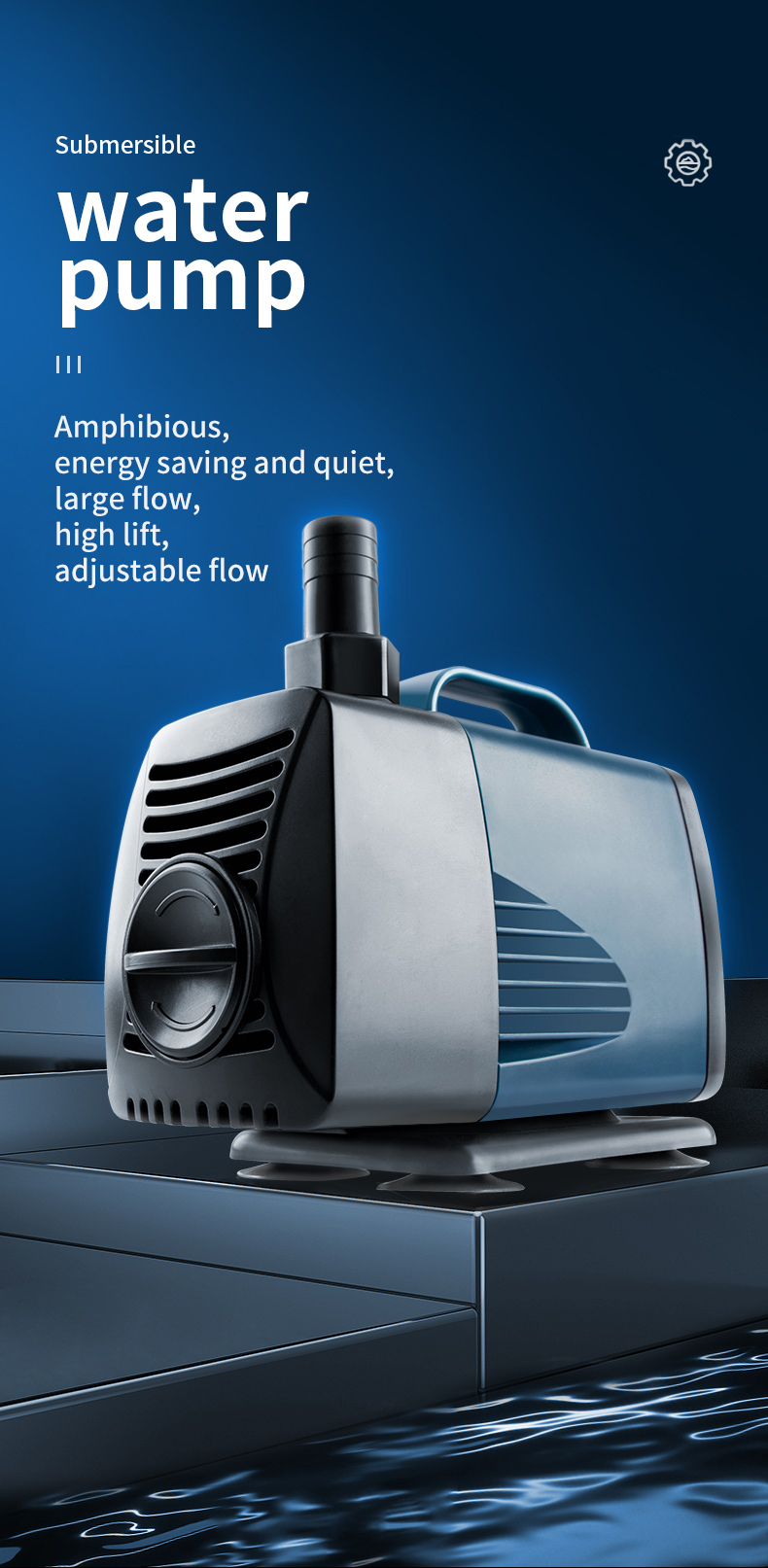Walk into any room where a healthy aquarium glows quietly in the corner and you will hear it first: a soft, steady hum. That hum is the heartbeat of the tank, the sound of water moving, and it is produced by the one piece of equipment that is at once the most ordinary and the most essential—the pump. It sits hidden beneath the gravel or tucked behind a curtain of plants, yet every breath the fish take, every sway of a frond of hornwort, every glint on a neon tetra’s flank owes something to this small box of spinning impellers and molded plastic.
Most people assume the pump is simply a “filter,” an underground janitor that tidies the water. Its real role, however, is far more layered. A pump is the engine of circulation, the courier of oxygen, the distributor of heat, and the silent architect of an entire underwater weather system.
Gas exchange: the invisible surface
Look closely at the surface of any aquarium and you will see a paper-thin skin, trembling like quicksilver. That membrane is where the aquarium breathes. Carbon dioxide produced by fish, plants, and bacteria escapes upward; oxygen from the room tumbles downward. The pump accelerates that exchange by disturbing the surface, folding water over itself again and again, multiplying the area available for trade. Air stones and spray bars are simply extensions of the pump’s lung: they shatter water into droplets so fine that each droplet becomes a traveling bubble of atmosphere, ferrying oxygen to the roots of sword plants and the capillaries of corydoras.
Temperature and chemistry: the equalizer
Heaters and chillers can only do half the job of regulating temperature; if they heat one corner of the tank and the water never moves, the fish will still be cold everywhere else. The pump distributes that warmth, pulling cool water past the heater and pushing warm water toward the gravel. The same action keeps pH swings gentle, prevents “dead zones” where nitrifying bacteria cannot reach their ammonia lunch, and carries trace minerals to every leaf tip. In a reef tank, the pump even delivers the planktonic snow that corals strain from the current.
Biology: the hidden garden
Below the gravel lies a second, unseen world—a labyrinth of ceramic tubes, sponges, or bio-balls colonized by billions of microscopic janitors. These bacteria convert toxic ammonia into less harmful nitrate, but they are fussy tenants. If water rushes past them too quickly, they starve for nutrients; too slowly, and they suffocate in their own waste. A well-matched pump feeds them at the perfect tempo, like an irrigation system for an invisible orchard.
The quiet choreographer
Finally, there is the aesthetic dimension. A pump can turn an aquarium into a living landscape. A gentle swirl encourages pearlweed to sway like meadow grass; a stronger jet sends schools of rummy-nose tetras flickering in synchronized arcs. In a paludarium, the same pump pushes water up a narrow tube so it can cascade over moss-covered stones, the sound masking the city beyond the window. Even the humblest goldfish bowl benefits from the subtle choreography that keeps the fish from endlessly circling the same glass corridor.
In the end, a pump is not just a mechanical add-on; it is the difference between a stagnant puddle and a living river in miniature. It is the reason an aquarium can hold a slice of the Amazon in a Brooklyn apartment or the Red Sea on a desk in Tokyo. So the next time you hear that soft, persistent hum, think of it as the aquarium whispering to itself: I am alive, and the pump is my pulse.
Post time: Aug-11-2025

